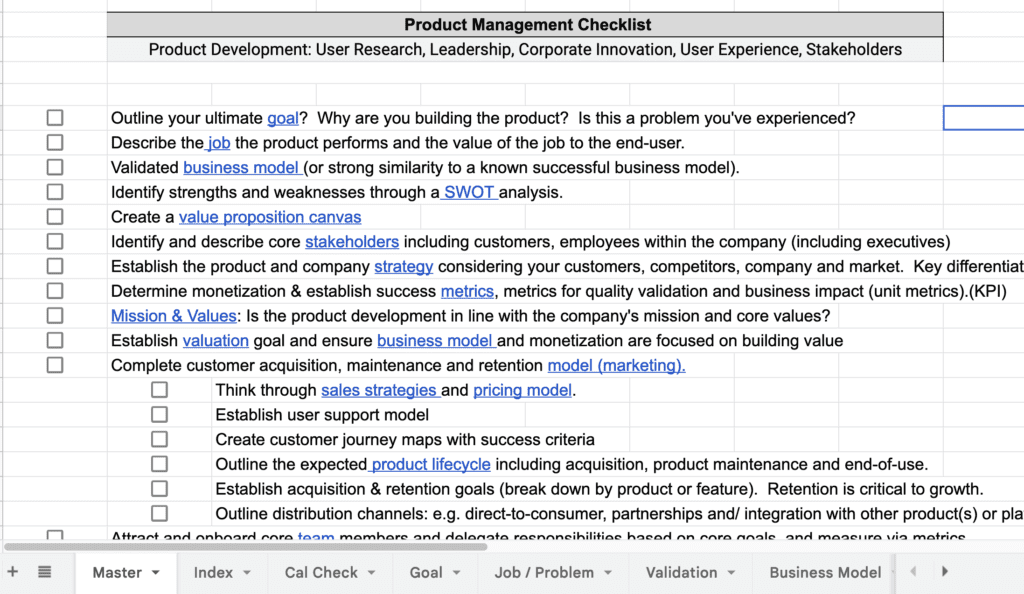Product Management Checklist – New Process
For over a decade, I’ve been building products. My initial entrance into the process could be compared to someone going to court with no legal training. The first time is awkward. A lot of things don’t work. It helps to make everyone around know that it is a work in progress and you are doing your best to make everything better and their feedback helps.
Feedback is difficult to get. Only very patient, thoughtful and forward thinking customers are willing to have detailed conversations about their problems and how they wish there was/were a product that could solve that problem. You wouldn’t expect someone in fifth grade to write a complicated college-level thesis document. But, that fifth grader might be very smart and that thesis paper is right around the corner.
I’m rethinking everything. One of the biggest challenges to developing a technical product is finding a team that is committed. Many development companies will look to simply get their paycheck and move on to the next project, leaving you with a situation. You may have to rebuild everything and most new development teams want to rewrite everything. Rebuilding is a stressful, complicated and time-consuming process, not to mention expensive. Then you will have the same issue you had when you started. Is the team committed.
Having a clear plan helps the team know where the product is going and the environment can become mission-driven. I fleshed out a product management checklist with some feedback from other industry professionals. It was a good exercise and I now have a template that I am using to build a number of products, not just rethinking the product but rethinking the business model and how the product can product value and have a sustainable future.

Integrated workflows and processes also help to cut down on time and make smart data-driven decisions.

The most common feedback I hear from investors, advisors and others is ‘how does the product make money?,’ ‘has the product been validated in the market?,’ and ‘how does the product compare to other products in the market?’ If another product already exists that does the same thing, are you competing for the same customer or can the customer use both products?
A thousand questions. Finding the answers!







